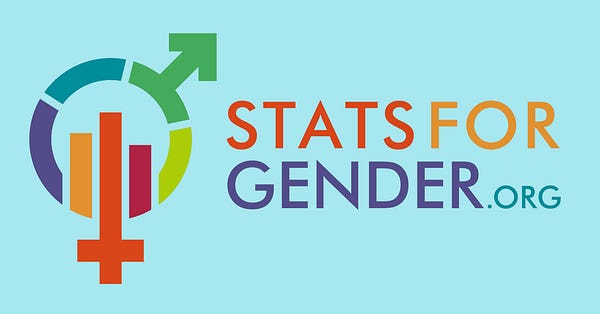The gist
The Royal Children’s Hospital Melbourne, home to Australia’s largest gender clinic, is appealing for donations with the alarming message that one in two young people who identify as transgender will attempt to take their own lives.
“Australian data shows 80 per cent of transgender young people self-harm and 48 per cent attempt suicide before the age of 24,” according to an article about the RCH gender clinic posted on the hospital foundation’s Where your money goes webpage.
The suicide risk figures come from the Telethon Kids Institute’s 2017 Trans Pathways study, an anonymous, online, self-report survey with a non-representative “convenience sample”, meaning there is no firm basis for extrapolating its findings to trans-identifying youth generally.
“Online surveys do not provide an accurate record of actual suicide attempts, especially in a climate where the media relentlessly promotes suicidality as an essential part of the transgender experience,” said University of Oxford sociologist Dr Michael Biggs, who has published one of the few papers on completed suicides at a gender clinic. (Suicidality is risk of suicide, indicated by suicidal ideas or plans.)
Media coverage by the ABC, Australia’s public broadcaster, suggests a simplistic link between trans identity and suicide risk, and showcases medicalised gender change as lifesaving.
“It is irresponsible to exaggerate the prevalence of suicide,” Dr Biggs says in his January 2022 paper. “Aside from anything else, this trope might exacerbate the vulnerability of transgender adolescents”.
Donations to the RCH foundation pay for the gender clinic’s Trans20 longitudinal study of its “gender affirming” treatment model including puberty blocker drugs and cross-sex hormones. The study lacks a comparison group of patients offered an alternative treatment, such as exploratory psychotherapy.
The hospital did not reply to questions from GCN about its handing of the suicidality issue, including whether or not parents of new patients at the gender clinic are presented with the alarming Trans Pathways statistics.
The detail
In his paper Dr Biggs analysed data from the United Kingdom’s Tavistock youth gender clinic, and calculated “that the suicide rate of transgender adolescents is higher than that of their [non-trans] peers, but thankfully still very low — the annual suicide rate is 13 per 100,000”. This was based on the four patients known or suspected to have died by suicide out of about 15,000 patients seen from 2010 to 2020.
The Tavistock clinic — known around the world for its court battle with former patient Keira Bell, who “detransitioned” after puberty blocker drugs, testosterone and mastectomy — has links with the RCH clinic in Melbourne.
Dr Biggs said the UK clinic, “to its credit, does not exaggerate the risk of suicide”.
He pointed to the Tavistock’s Evidence base webpage, which states that “suicide is extremely rare”.
“Moreover, the Tavistock's former lead psychologist Dr Bernadette Wren has warned that ‘inaccurate data and alarmist opinion’ could have a negative effect on children who identify as transgender,” Dr Biggs told GCN.
A low-quality online survey commissioned by the LGBTQ lobby group Stonewall in the UK reported that 45 per cent of young trans respondents had attempted suicide.
The Tavistock clinic had “never used the Stonewall stat, they have always urged caution around these kind of stats,” said Stephanie Davies-Arai, founder of the UK watchdog group Transgender Trend.
The clinic issued a reassuring statement after the 2018 ITV series Butterfly, which told the story of an 11-year-old trans-identified child, featured self-harm.
“It is not helpful to suggest that suicidality is an inevitable part of this condition [of gender dysphoria, which involves distressful conflict between the body and an opposite-sex sense of ‘gender identity’,]” the statement said.
The clinic said the suicide risk of its patients was similar to that of young people seen by child and adolescent mental health services.
At last month’s historic #DetransAwarenessDay webinar hosted by the international parents’ group Genspect, British detransitioner Allie, 25, said she got the testosterone she wanted with no formal diagnosis of gender dysphoria and no exploratory therapy to see if her many mental health problems were behind her wish to transition.
In her talk at the webinar, she was sharply critical of the “transition or die” message.
“All the time, we see on Twitter, on Tumblr, on TikTok, that if you don't transition, you're going to be depressed, miserable,” she said. “[They say] if trans kids can't get hormones, they're gonna kill themselves.
“We need a serious rethink of how we market these ideas, because it's leading a lot of girls like me and a lot of boys as well, probably, into thinking that [medical transition] is the only solution for that feeling of being outcasts — and that feeling of, I’m meant to be something that I wasn't born as.”


While the Bell litigation caused a temporary pause in referrals at the Tavistock clinic, the RCH Melbourne clinic continues to see exponential growth, with more than 800 new patients reported in 2021. This represents a hundredfold increase over 10 years.
The gender clinic’s own 10-year audit of patient data from 2007 to 2016 found a level of suicidality and self-harm “considerably lower” than in the Trans Pathways online survey, a group of Melbourne-based researchers reported in a July 2021 paper.
In Trans Pathways, 79.7 per cent of respondents said they had self-harmed, as opposed to 24.8 per cent in the audit. The figure for suicidal thoughts in Trans Pathways was 82.4 per cent, compared with 29.5 per cent reporting suicidal ideation to the gender clinic.
The Melbourne researchers offer various explanations for this stark discrepancy, including the self-report method used by Trans Pathways, and its online respondents being less privileged and less likely to enjoy the family support found among the 359 patients in the clinic’s audit.
Trans Pathways found its 859 respondents after promoting the survey through avenues such as social media, queer departments at universities, gender clinics, LGBTQ groups and mental health agencies.
The latest version of the RCH trans youth treatment guideline quotes the Trans Pathways figure of 48.1 per cent having attempted suicide. The document says not giving gender affirming treatment, such as puberty blockers or cross-sex hormones, is not “a neutral option”, and cites suicide risk.


Parents groups sceptical about medicalised gender change argue that the “trans kids suicide” narrative can be an unethical pressure tactic, and a distraction from underlying, non-gender issues that call for exploratory psychotherapy.
“We are extremely concerned by the continued attempts to weaponise suicide statistics related to trans issues,” said a spokesman for the Genspect group, which campaigns for more treatment options beyond “affirmation-only” medicalisation.
“Not only are many of the [suicide risk] data seriously flawed, conducted by self-report with little to no long-term follow up, there is no comparator with real suicide statistics after transition,” the spokesman told GCN.
“There is no high-quality evidence showing that suicide or suicidality decline after medical transition; nor that life expectancy is improved with medical transition.
“It is not sustainable for medical professionals to create a climate where young adolescents are encouraged to think of themselves being at a high risk of suicide.”
Genspect, which has psychiatrists and psychotherapists among its advisers, urged “extreme caution” in addressing the topic of suicide, and stressed the long-established research finding that social influence can play a part in suicide.
The real drivers of suicide risk among today’s gender clinic teenagers may be difficult to disentangle.
A study at a youth gender clinic in Sydney, Australia, reported its patients had high rates of anxiety, depression, suicidal ideas, behavioural disorders, autism and “adverse childhood experiences” such as family conflict, exposure to domestic violence, parents with mental illness, loss of important figures through separation, and bullying.
“[Yet] families tended to medicalise the child’s distress, attributing it solely to gender dysphoria as an isolated phenomenon, with the consequence that the family identified the medical pathway as providing the only potential way forward,” says the 2021 paper by child and adolescent psychiatrist Dr Kasia Kozlowska and colleagues.
In 2019, clinical psychologist Dr Ken Zucker, a world authority on youth gender dysphoria and editor of the journal Archives of Sexual Behavior, challenged the activist insinuation that this condition brings uniquely high suicide risk.
“If you are depressed, your suicidality risk is going to be elevated, but you see that in kids who are depressed but don’t have gender dysphoria,” he said.
“The idea that adolescents with gender dysphoria are at a higher risk of suicide per se is dogma—and I think it’s wrong.”
In a 2021 podcast Dr Laura Edwards-Leeper, clinical psychologist and chair of the child and adolescent committee for the World Professional Association for Transgender Health, rejected the activist claim that “it’s transition or die”.
“As far as I know there are no studies that say that if we don’t start these kids immediately on hormones when they say they want them that they are going to commit suicide — so that is misguided,” she said.

A new journal paper on informed consent and trans-identified young people reminds health providers that “any conversations about suicide should be handled with great care, due to its socially contagious nature”.
“Suicide among trans-identified youth is significantly elevated compared to the general population of youth,” says the paper, with veteran psychiatrist Professor Stephen B. Levine as lead author, and with support from the Society for Evidence-based Gender Medicine.
“However, the ‘transition or die’ narrative, whereby parents are told that their only choice is between a ‘live trans daughter or a dead son’ (or vice-versa), is both factually inaccurate and ethically fraught.
“Disseminating such alarmist messages hurts the majority of trans-identified youth who are not at risk for suicide.
“It also hurts the minority who are at risk, and who, as a result of such misinformation, may forgo evidence-based suicide prevention intervention in the false hopes that transition will prevent suicide.
“The notion that trans-identified youth are at alarmingly high risk of suicide usually stems from biased online samples that rely on self-report, and frequently conflates suicidal thoughts and non-suicidal self-harm with serious suicide attempts and completed suicides.
“The ‘transition or suicide’ narrative falsely implies that transition will prevent suicides.
“Clinicians working with trans-identified youth should be aware that although in the short-term, gender-affirmative interventions can lead to improvements in some measures of suicidality, neither hormones nor surgeries have been showed to reduce suicidality in the long-term.”
Mental health help: Lifeline (Australia), Samaritans (UK) and National Suicide Prevention Line (US)




This is a great summary of the current understanding of the relation between suicide and medicalizing a gender identity (or rather, the lack of relation...). Thank you!
Some questions could also be asked about the direction of causality in any suicide-transgender link. If people are suicidal for one reason or another, a possible effect, or you might say release, is harming themselves in some way such as transgender surgery.